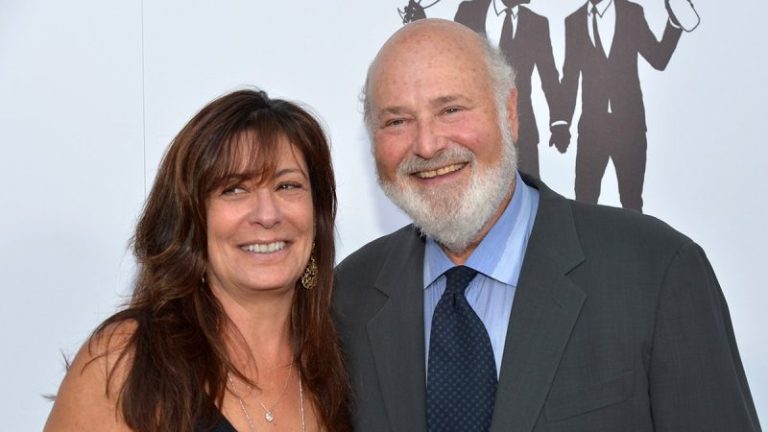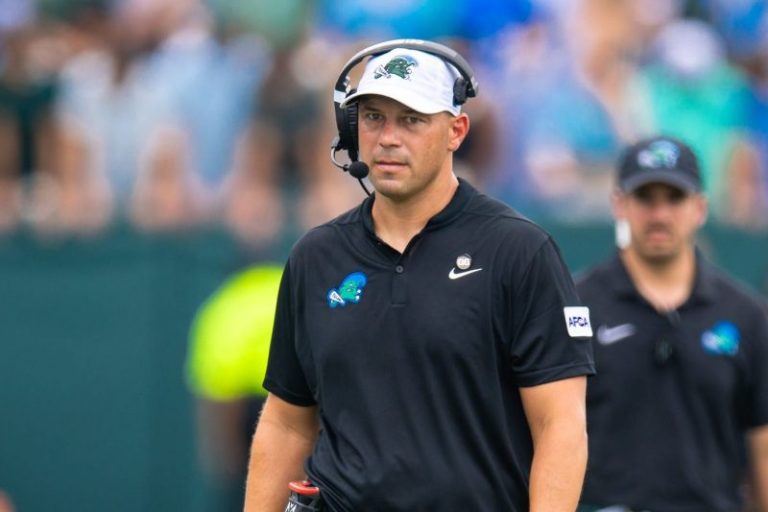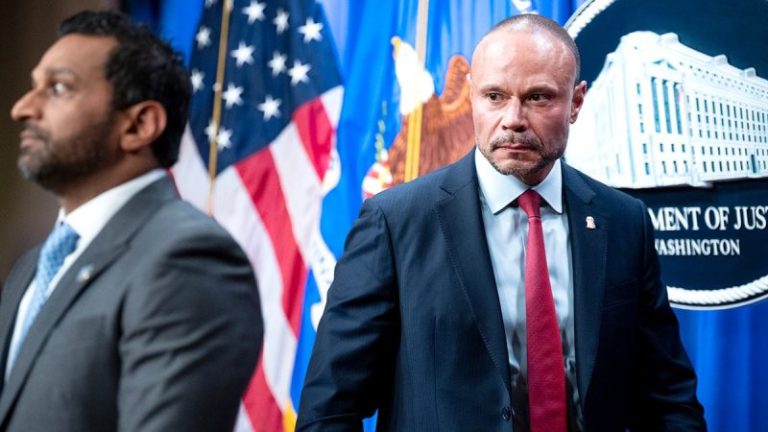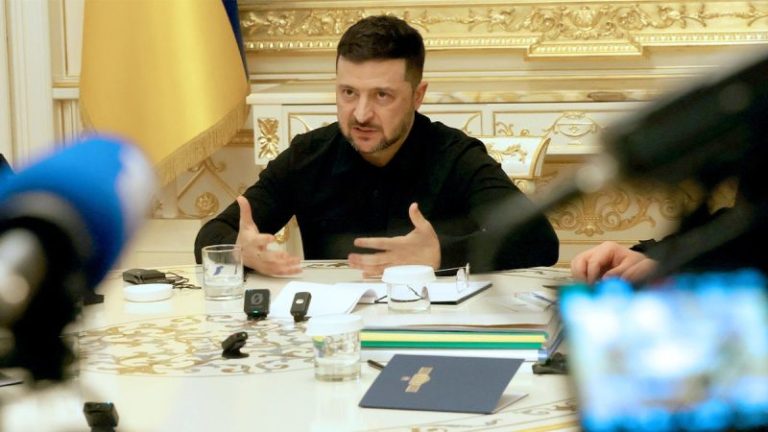The Chiefs’ imminent end appears to have arrived, as the team needs to embrace change.
The Green Bay Packers might have had the worst Sunday of any team, losing a number of standout players, most notably Micah Parsons.
Reigning MVP Josh Allen propelled the Buffalo Bills to a huge road win over the New England Patriots.
‘It doesn’t look good’ became the regrettable catchphrase of Week 15 in the NFL.
It has been some time since injuries have hit so many stars throughout the league on the same day, with Kansas City Chiefs quarterback Patrick Mahomes suffering a torn anterior cruciate ligament and Green Bay Packers edge rusher Micah Parsons feared to have met the same fate. Meanwhile, Los Angeles Rams coach Sean McVay also said the outlook wasn’t promising for wide receiver Davante Adams, whose status is uncertain after he suffered a non-contact hamstring injury.
And along with the personnel hits came a significant reshaping of the playoff picture, complete with two teams becoming the first to seal their postseason spots in the Rams and Denver Broncos.
Here are the biggest winners and losers of Week 15 in the NFL:
NFL Week 15 winners
Josh Allen
Only the reigning NFL MVP could shrug off being caught on camera vomiting on the sideline. While no one could have blamed Allen if his fourth-quarter act had been in response to the Buffalo Bills’ porous run defense, which gave up 246 yards and four touchdowns on the ground, the quarterback assured it was a common occurrence for him. Despite that, he once again harnessed his distinct cool and singular playmaking streak to propel Buffalo to a wild 35-31 win over the New England Patriots, who saw their hopes of clinching the AFC East this week evaporate as quickly as their 21-0 lead did. Initially boxed in by some schematic and personnel restraints, Allen once again started off by working the underneath area almost exclusively in the first half as the Bills’ deficit grew. But the aggressiveness of yesteryear kicked in for the quarterback once the team’s moment of desperation arrived, and his knack for extending plays, operating out of structure and attacking downfield sparkled in the furious rally. In all likelihood, he’ll need to revert to this mode a few more times to rescue a group that looks bound to get roped into more shootouts, particularly in the postseason. With this outing, Buffalo established that it is far from the most trustworthy team likely to make the playoff field, but it might be the most dangerous.
Bo Nix
The Denver Broncos quarterback has been decried as the weak link in an otherwise Super Bowl-ready roster. Yet in a matchup that many expected to be defined by the Packers offense taking on the Broncos defense, it was Nix who might have been the deciding factor.
The second-year signal-caller strung together arguably the most impressive outing of his career, repeatedly dicing apart zone coverage for 302 yards and four touchdowns on the day in Denver’s 34-26 triumph. Nix helped the Broncos unlock an explosive streak that has been missing in action for large stretches, with six of his completions coming more than 15 yards downfield. He also weaponized his mobility, extending plays to give his receivers more time to get open. If this version of Nix shows up in the playoffs, Denver stands out from the rest of the pack as the AFC’s clear front-runner.
Jim and John Harbaugh
It was a decidedly good day for the brotherly coaching duo. Jim Harbaugh managed to solidify the Los Angeles Chargers’ standing while dashing the Chiefs’ playoff hopes with a 16-13 win at Arrowhead Stadium. That outcome once seemed unfathomable for a franchise that for so long stood in the Chiefs’ shadow in the AFC West – and it might earn the Bolts a thank-you card from the rest of the conference, which undoubtedly is relishing the first postseason field without Kansas City since 2014. Meanwhile, John Harbaugh helped calm the Baltimore Ravens’ bubbling bad vibes with a 24-0 win over the Cincinnati Bengals, who posed a major threat to send the team reeling with another loss. If the Pittsburgh Steelers falter on Monday against the Miami Dolphins, there will be another tie atop the AFC North. More importantly, though, Baltimore rediscovered its mojo somewhat and displayed some resilience. It’s a far cry from the title-contender form the franchise has known in recent years, but any progress is welcome for an outfit that looked poised to fall off in the AFC playoff picture just a week ago.
Trevor Lawrence
Getting to face the New York Jets in mid-December feels akin to a Southeastern Conference team scheduling a Football Championship Subdivision patsy in between late-season rivalry games. Nevertheless, Lawrence and the Jacksonville Jaguars didn’t let up against Gang Green, with the quarterback notching six total touchdowns – five passing, one rushing – to power a 48-20 rout. The signal-caller has quietly come on strong as of late, exhibiting impressive command and precision Sunday when working the intermediate levels of the field. He completed nine of 12 attempts that went for 10-19 air yards, with three of his scoring strikes coming from that distance. There will be some whiplash in going up against the Broncos’ defense in Week 16 after facing the Jets’ undermanned group, but there are signs that the passing game is starting to catch up to the rest of the operation.
NFL Week 15 losers
Patrick Mahomes
As their season unraveled in recent weeks, the Chiefs faced repeated questioning of whether they were facing an imminent end: to their playoff hopes, to their dynasty, and to the approach that got them to this rare position. At least one of those elements has now been answered with Sunday definitively wrapping up the team’s 10-year run of postseason berths.
This was always bound to be difficult territory for Mahomes, who had never fallen short of the playoffs as a pro. But the three-time Super Bowl MVP will be navigating an even more difficult challenge than a different mental approach this offseason after suffering a torn anterior cruciate ligament in the closing moments of the Chiefs’ loss to the Chargers.
Now, Kansas City needs to embrace the change that’s been forced upon it. The franchise tried to run things back after its Super Bowl 59 setback, with the largest area of change coming in its repeated insistence on reclaiming the explosiveness of the early Mahomes offenses. But with the injury essentially bringing a closer to this era, the Chiefs should be focused on reinvention rather than replication.
That might be a stretch for Andy Reid, who clung to his group’s identity even as it proved untenable for competing with the league’s elite. But Mahomes was frequently left to compensate for a woefully ineffective run game, receivers who couldn’t get open with any regularity and protection that broke down all too frequently, with the quarterback being pressured on 48.6% of his dropbacks against the Chargers, according to Next Gen Stats. Without some fundamental change to both the scheme – particularly in the willingness to run from under center – and personnel, Mahomes will likely land in the same spot he found himself this season, all while attempting to recover from major surgery and begin a new chapter as he embarks on his post-30 playing career.
Indianapolis Colts
Philip Rivers’ teammates must be emulating their quarterback by saying ‘dadgummit.’ The 44-year-old’s incredible comeback looked as though it was headed for an incredible outcome when Blake Grupe booted a 60-yard field goal in the final minute to give Indianapolis a one-point lead over the Seattle Seahawks. But in less than 30 seconds, Seattle reclaimed the lead by getting in position for a Jason Myers field goal. Rivers’ ensuing heave over the middle was tipped and intercepted by Coby Bryant to seal Seattle’s 18-16 win.
Like the old timer’s famous delivery, his performance Sunday was hardly pretty but still sufficient – at least relative to what the team could expect from a retiree who last played five years ago. Rivers’ 120 yards on 18-of-27 passing won’t wow anyone, but he gave the rapidly sinking Colts a legitimate chance to stand up to one of the league’s most formidable defenses in an extremely difficult road setting. Defensive coordinator Lou Anarumo and the defense deserve plenty of credit for holding Seattle to six field goals, but this result laid bare Indianapolis’ undeniable reality: There’s not enough left in the tank to regroup for a postseason run, and things don’t look much better in 2026 and beyond given the myriad missteps made by Shane Steichen and Chris Ballard that got the team to this point.
Green Bay Packers
Arguably no team had a worse day than Green Bay, which not only now must prepare for a playoff push without Parsons but also lost big-play wide receiver Christian Watson, standout right tackle Zach Tom and promising safety Evan Williams. Losing any for a substantial amount of time could deal a substantial blow to the Packers’ playoff hopes after the team slid all the way to the NFC’s No. 7 seed with the loss to the Broncos.
But the most consequential development was clearly Parsons’ knee injury. The marquee trade acquisition had more than lived up to his lofty billing and price tag, racking up 12 ½ sacks while entering the week with a league-high 60 pressures. But his contributions can’t be fully captured by individual statistics, as his mere presence forced opposing offenses to account for his game-wrecking capabilities. Without him, the Packers’ defense looks ill-equipped to create any disruption after failing in recent weeks to capitalize on all the advantages he conferred. Green Bay is now without two players who set the tone on both offense (tight end Tucker Kraft, who suffered a torn ACL in November) and defense (Parsons). If the later unit regresses amid Parsons’ absence, as is to be expected, the Packers could have serious trouble maintaining their place as one of the NFC’s top Super Bowl threats.
Carolina Panthers
They’ve kept stride down the stretch with the Tampa Bay Buccaneers. On Sunday, they did so in a highly undesirable manner, stumbling to a 20-17 loss to the New Orleans and returning the NFC South lead just three days after the Buccaneers had gifted it with a face-plant against the Atlanta Falcons. Had Carolina managed to eke out a win, it would have been able to wrap up a division title – and the franchise’s first playoff berth since 2017 – with a win over Tampa Bay next weekend. Instead, the Panthers’ hopes very well could come down to the Week 18 finale and rematch against the Buccaneers. There’s plenty for Dave Canales and Co. to rue here, from the 10-point lead they squandered to Lathan Ransom’s unnecessary roughness penalty that set Charlie Smyth up for the game-winning 47-yard field goal. And while Carolina still has a chance to set things straight with its pair of matchups against the Buccaneers, the sweep by New Orleans will surely haunt the organization if it falls short of the postseason yet again.
New England Patriots
By Week 15, teams deserve to be judged on their full body of work rather than an isolated outcome. The problem for the Patriots, however, is that a soft schedule left many doubting the legitimacy of the AFC East leader’s resurgence. New England at first looked like it was ready to turn its divisional showdown with Buffalo into a coronation, but the defense came undone in the second half and gave the doubters more fodder. Getting Milton Williams back by the playoffs should aid an ailing front susceptible to giving up big plays on the ground, and a run at the conference’s No. 1 seed is still realistic. But this served as a reminder that a young and unproven squad might be unreliable come January.
Joe Burrow
Are we having fun yet? The Bengals quarterback created a buzz last week with his frank comments about his discontent with another lost season, though he clarified after he game that he wasn’t taking aim at the organization. But an admitted bummer of a campaign plunged to new depths with the shutout loss to the Ravens. Not only were Cincinnati’s extreme long-shot playoff hopes officially dashed, but Burrow threw a pick-six for the second consecutive week. Unlike last week’s snow-blasted battle with the Bills, however, there was nothing for the offense to hang its hat on as the unit was blanked for the first time in a start by Burrow. Miscues piled up and pressure was unrelenting, but the passer himself was also responsible for a fair number of slip-ups on a day when he finished with the second-worst quarterback rating of his career (58.2). A lot of reflection will be required in Cincinnati this offseason, but it’s difficult to see how a franchise that has remained so stubbornly committed to its vision will reinvent itself after missing the playoffs for a third consecutive year.
Shedeur Sanders and Jerry Jeudy
The two had to resolve a heated sideline confrontation two weeks ago in the Cleveland Browns’ loss to the San Francisco 49ers. But the quarterback would be within his rights to reignite a beef with the wide receiver after Jeudy allowed an end zone pass to careen off his chest and into the hands of Chicago Bears cornerback Jaylon Johnson, who secured the interception in a 31-3 blowout. Sanders threw two more picks and took a season-high five interceptions in a substantial step back from his breakout performance a week earlier. Jeudy shouldn’t be expected to save an irredeemable offense, but he’s not doing nearly enough to give the franchise any confidence that a new quarterback could step in next year and succeed.
This post appeared first on USA TODAY










